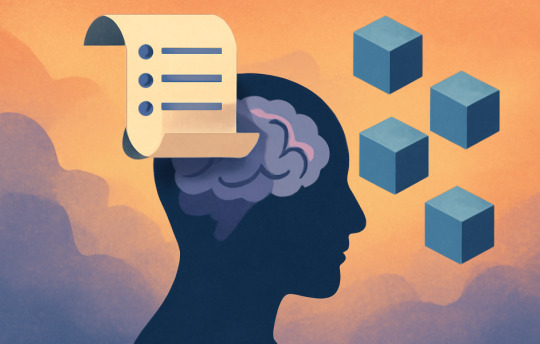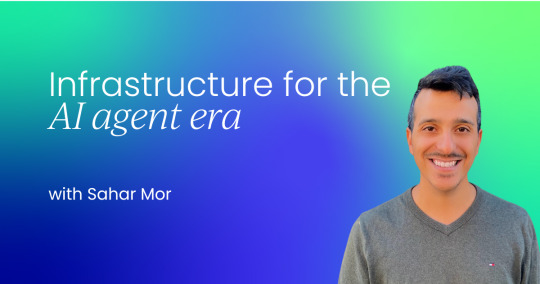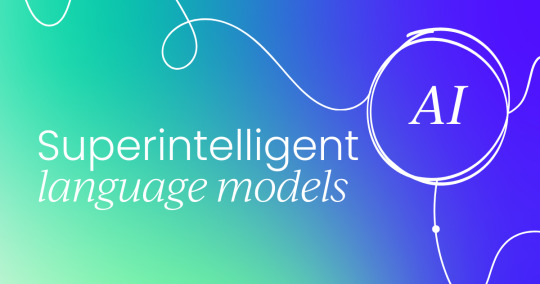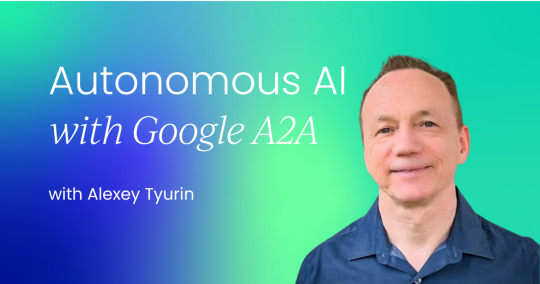#AI applications in engineering
Explore tagged Tumblr posts
Text
Will AI and Machine Learning Take Over Civil Engineering Degree?
If you’ve been following the latest trends in civil engineering degree, you might have noticed that Artificial Intelligence (AI) and Machine Learning (ML) are making quite a splash. But what does this mean for traditional civil engineering degrees? Will AI and ML render these programs obsolete, or will they enhance the educational landscape? The Changing Face of Civil Engineering Degree Civil…

View On WordPress
#AI applications in engineering#AI education#AI in civil engineering#automation in construction#civil engineering careers#civil engineering degrees#data analysis in civil engineering#degree#engineering job market#engineering technology#future of civil engineering#Generative Design#infrastructure development#Machine Learning in engineering#Predictive Maintenance#skills for engineers
0 notes
Text
Empower Your Digital Presence with Cutting-Edge Frameworks
In today’s fast-evolving digital landscape, staying ahead requires more than just a functional website or application—it demands innovation and efficiency. At Atcuality, we specialize in Website and Application Framework Upgrade solutions tailored to your business goals. Whether you're looking to optimize performance, enhance user experience, or integrate the latest technologies, our team ensures seamless upgrades that align with industry standards. Transitioning to advanced frameworks not only improves loading speeds and scalability but also strengthens your cybersecurity measures. With Atcuality, you gain access to bespoke services that future-proof your digital assets. Let us elevate your online platforms to a new realm of excellence.
#ai applications#artificial intelligence#ai services#website development#website developer near me#website developers#website developer in india#web development#web design#application development#app development#app developers#digital marketing#seo services#seo#emailmarketing#search engine marketing#search engine optimization#digital consulting#virtual reality#vr games#vr development#augmented reality#augmented and virtual reality market#cash collection application#task management#blockchain#metaverse#cloud computing#information technology
8 notes
·
View notes
Text
Why Large Language Models Skip Instructions and How to Address the Issue
New Post has been published on https://thedigitalinsider.com/why-large-language-models-skip-instructions-and-how-to-address-the-issue/
Why Large Language Models Skip Instructions and How to Address the Issue


Large Language Models (LLMs) have rapidly become indispensable Artificial Intelligence (AI) tools, powering applications from chatbots and content creation to coding assistance. Despite their impressive capabilities, a common challenge users face is that these models sometimes skip parts of the instructions they receive, especially when those instructions are lengthy or involve multiple steps. This skipping leads to incomplete or inaccurate outputs, which can cause confusion and erode trust in AI systems. Understanding why LLMs skip instructions and how to address this issue is essential for users who rely on these models for precise and reliable results.
Why Do LLMs Skip Instructions?
LLMs work by reading input text as a sequence of tokens. Tokens are the small pieces into which text is divided. The model processes these tokens one after another, from start to finish. This means that instructions at the beginning of the input tend to get more attention. Later instructions may receive less focus and can be ignored.
This happens because LLMs have a limited attention capacity. Attention is the mechanism models use to decide which input parts are essential when generating responses. When the input is short, attention works well. But attention becomes less as the input gets longer or instructions become complex. This weakens focus on later parts, causing skipping.
In addition, many instructions at once increase complexity. When instructions overlap or conflict, models may become confused. They might try to answer everything but produce vague or contradictory responses. This often results in missing some instructions.
LLMs also share some human-like limits. For example, humans can lose focus when reading long or repetitive texts. Similarly, LLMs can forget later instructions as they process more tokens. This loss of focus is part of the model’s design and limits.
Another reason is how LLMs are trained. They see many examples of simple instructions but fewer complex, multi-step ones. Because of this, models tend to prefer following simpler instructions that are more common in their training data. This bias makes them skip complex instructions. Also, token limits restrict the amount of input the model can process. When inputs exceed these limits, instructions beyond the limit are ignored.
Example: Suppose you give an LLM five instructions in a single prompt. The model may focus mainly on the first two instructions and partially or fully ignore the last three. This directly affects how the model processes tokens sequentially and its attention limitations.
How Well LLMs Manage Sequential Instructions Based on SIFo 2024 Findings
Recent studies have looked carefully at how well LLMs follow several instructions given one after another. One important study is the Sequential Instructions Following (SIFo) Benchmark 2024. This benchmark tests models on tasks that need step-by-step completion of instructions such as text modification, question answering, mathematics, and security rule-following. Each instruction in the sequence depends on the correct completion of the one before it. This approach helps check if the model has followed the whole sequence properly.
The results from SIFo show that even the best LLMs, like GPT-4 and Claude-3, often find it hard to finish all instructions correctly. This is especially true when the instructions are long or complicated. The research points out three main problems that LLMs face with following instructions:
Understanding: Fully grasping what each instruction means.
Reasoning: Linking several instructions together logically to keep the response clear.
Reliable Output: Producing complete and accurate answers, covering all instructions given.
Techniques such as prompt engineering and fine-tuning help improve how well models follow instructions. However, these methods do not completely help with the problem of skipping instructions. Using Reinforcement Learning with Human Feedback (RLHF) further improves the model’s ability to respond appropriately. Still, models have difficulty when instructions require many steps or are very complex.
The study also shows that LLMs work best when instructions are simple, clearly separated, and well-organized. When tasks need long reasoning chains or many steps, model accuracy drops. These findings help suggest better ways to use LLMs well and show the need for building stronger models that can truly follow instructions one after another.
Why LLMs Skip Instructions: Technical Challenges and Practical Considerations
LLMs may skip instructions due to several technical and practical factors rooted in how they process and encode input text.
Limited Attention Span and Information Dilution
LLMs rely on attention mechanisms to assign importance to different input parts. When prompts are concise, the model’s attention is focused and effective. However, as the prompt grows longer or more repetitive, attention becomes diluted, and later tokens or instructions receive less focus, increasing the likelihood that they will be overlooked. This phenomenon, known as information dilution, is especially problematic for instructions that appear late in a prompt. Additionally, models have fixed token limits (e.g., 2048 tokens); any text beyond this threshold is truncated and ignored, causing instructions at the end to be skipped entirely.
Output Complexity and Ambiguity
LLMs can struggle with outputting clear and complete responses when faced with multiple or conflicting instructions. The model may generate partial or vague answers to avoid contradictions or confusion, effectively omitting some instructions. Ambiguity in how instructions are phrased also poses challenges: unclear or imprecise prompts make it difficult for the model to determine the intended actions, raising the risk of skipping or misinterpreting parts of the input.
Prompt Design and Formatting Sensitivity
The structure and phrasing of prompts also play a critical role in instruction-following. Research shows that even small changes in how instructions are written or formatted can significantly impact whether the model adheres to them.
Poorly structured prompts, lacking clear separation, bullet points, or numbering, make it harder for the model to distinguish between steps, increasing the chance of merging or omitting instructions. The model’s internal representation of the prompt is highly sensitive to these variations, which explains why prompt engineering (rephrasing or restructuring prompts) can substantially improve instruction adherence, even if the underlying content remains the same.
How to Fix Instruction Skipping in LLMs
Improving the ability of LLMs to follow instructions accurately is essential for producing reliable and precise results. The following best practices should be considered to minimize instruction skipping and enhance the quality of AI-generated responses:
Tasks Should Be Broken Down into Smaller Parts
Long or multi-step prompts should be divided into smaller, more focused segments. Providing one or two instructions at a time allows the model to maintain better attention and reduces the likelihood of missing any steps.
Example
Instead of combining all instructions into a single prompt, such as, “Summarize the text, list the main points, suggest improvements, and translate it to French,” each instruction should be presented separately or in smaller groups.
Instructions Should Be Formatted Using Numbered Lists or Bullet Points
Organizing instructions with explicit formatting, such as numbered lists or bullet points, helps indicate that each item is an individual task. This clarity increases the chances that the response will address all instructions.
Example
Summarize the following text.
List the main points.
Suggest improvements.
Such formatting provides visual cues that assist the model in recognizing and separating distinct tasks within a prompt.
Instructions Should Be Explicit and Unambiguous
It is essential that instructions clearly state the requirement to complete every step. Ambiguous or vague language should be avoided. The prompt should explicitly indicate that no steps may be skipped.
Example
“Please complete all three tasks below. Skipping any steps is not acceptable.”
Direct statements like this reduce confusion and encourage the model to provide complete answers.
Separate Prompts Should Be Used for High-Stakes or Critical Tasks
Each instruction should be submitted as an individual prompt for tasks where accuracy and completeness are critical. Although this approach may increase interaction time, it significantly improves the likelihood of obtaining complete and precise outputs. This method ensures the model focuses entirely on one task at a time, reducing the risk of missed instructions.
Advanced Strategies to Balance Completeness and Efficiency
Waiting for a response after every single instruction can be time-consuming for users. To improve efficiency while maintaining clarity and reducing skipped instructions, the following advanced prompting techniques may be effective:
Batch Instructions with Clear Formatting and Explicit Labels
Multiple related instructions can be combined into a single prompt, but each should be separated using numbering or headings. The prompt should also instruct the model to respond to all instructions entirely and in order.
Example Prompt
Please complete all the following tasks carefully without skipping any:
Summarize the text below.
List the main points from your summary.
Suggest improvements based on the main points.
Translate the improved text into French.
Chain-of-Thought Style Prompts
Chain-of-thought prompting guides the model to reason through each task step before providing an answer. Encouraging the model to process instructions sequentially within a single response helps ensure that no steps are overlooked, reducing the chance of skipping instructions and improving completeness.
Example Prompt
Read the text below and do the following tasks in order. Show your work clearly:
Summarize the text.
Identify the main points from your summary.
Suggest improvements to the text.
Translate the improved text into French.
Please answer all tasks fully and separately in one reply.
Add Completion Instructions and Reminders
Explicitly remind the model to:
“Answer every task completely.”
“Do not skip any instruction.”
“Separate your answers clearly.”
Such reminders help the model focus on completeness when multiple instructions are combined.
Different Models and Parameter Settings Should Be Tested
Not all LLMs perform equally in following multiple instructions. It is advisable to evaluate various models to identify those that excel in multi-step tasks. Additionally, adjusting parameters such as temperature, maximum tokens, and system prompts may further improve the focus and completeness of responses. Testing these settings helps tailor the model behavior to the specific task requirements.
Fine-Tuning Models and Utilizing External Tools Should Be Considered
Models should be fine-tuned on datasets that include multi-step or sequential instructions to improve their adherence to complex prompts. Techniques such as RLHF can further enhance instruction following.
For advanced use cases, integration of external tools such as APIs, task-specific plugins, or Retrieval Augmented Generation (RAG) systems may provide additional context and control, thereby improving the reliability and accuracy of outputs.
The Bottom Line
LLMs are powerful tools but can skip instructions when prompts are long or complex. This happens because of how they read input and focus their attention. Instructions should be clear, simple, and well-organized for better and more reliable results. Breaking tasks into smaller parts, using lists, and giving direct instructions help models follow steps fully.
Separate prompts can improve accuracy for critical tasks, though they take more time. Moreover, advanced prompt methods like chain-of-thought and clear formatting help balance speed and precision. Furthermore, testing different models and fine-tuning can also improve results. These ideas will help users get consistent, complete answers and make AI tools more useful in real work.
#2024#ADD#ai#AI systems#ai tools#APIs#applications#approach#artificial#Artificial Intelligence#attention#Behavior#benchmark#Bias#Building#challenge#chatbots#claude#coding#complexity#Conflict#content#content creation#data#datasets#Design#efficiency#engineering#excel#focus
1 note
·
View note
Text
I wrote a long post abt how hysteria over cheating with AI is borderline irrelevant to my field and how that post implying it's a huge epidemic annoys me and then deleted it bc nobody cares. lol
#thinking of the guys who watched video games playthroughs during class all day and now he assists w cardiac and transplant surgeries#and he's great. we get training after graduation anyway and often what you learn in school is only narely applicable to your actual job#plus you're in an environment with a lot of other people who are keeping an eye on your decisions. ideally#but 'oh no teacher they're cheating at HOMEWORK' just comes off as very silly to me#ALSO if you genuinely think a nurse can glide their way through nursing school using chatgpt you clearly don't know#how our exams are structured or how we need to choose the right mc question of 5 extremely complex ones#or how if we get under 77% we fail the class and how most of the grade is in mc exams.#at least for me#I don't think using AI to cheat would even be possible#and ppl who were cheating were already doing so before AI anyway#welp that's it basically#disclaimer this is based on my experience but the national licensing exam IS myltiple choice and people DO fail#also if you're really graduating w chatgpt essays and going into a field and getting hired and NOBODY notices#that indicates maybe it doesn't actually matter?#I know for a fucking fact engineers need to be able to actually do their jobs to keep them too#cor.txt
3 notes
·
View notes
Text
Create Impactful Digital Experiences with Augmented Reality Development Services
At Atcuality, we believe in the power of augmented reality to transform how users interact with brands. Our augmented reality development services provide businesses with innovative solutions that captivate audiences by blending digital and real-world elements. This immersive technology enables users to visualize products, explore environments, and experience services in a whole new way. Our experienced team of developers and designers work collaboratively with clients to deliver custom AR applications that align with specific business goals. By adopting AR, businesses can enhance customer engagement, increase interaction, and differentiate themselves in a crowded market. With Atcuality’s augmented reality development services, you can create digital experiences that leave a lasting impression, building stronger connections with your audience. Discover how AR can benefit your brand and redefine customer interaction with Atcuality's expertise at your service.
#iot applications#artificial intelligence#technology#digital marketing#seo marketing#seo#seo services#emailmarketing#search engine optimization#google ads#socialmediamarketing#augmented reality#augmented human c4 621#augmented and virtual reality market#blockchain#ai powered application#amazon web services#mobile app development company#mobile app developers#mobile application development#app developers#app development company#azure cloud services#cash collection application#cloud security services#iot app development services#task management solution
4 notes
·
View notes
Text
The Impact of AI on Everyday Life: A New Normal
The impact of AI on everyday life has become a focal point for discussions among tech enthusiasts, policymakers, and the general public alike. This transformative force is reshaping the way we live, work, and interact with the world around us, making its influence felt across various domains of our daily existence. Revolutionizing Workplaces One of the most significant arenas where the impact…

View On WordPress
#adaptive learning#AI accessibility#AI adaptation#AI advancements#AI algorithms#AI applications#AI automation#AI benefits#AI capability#AI challenges#AI collaboration#AI convenience#AI data analysis#AI debate#AI decision-making#AI design#AI diagnostics#AI discussion#AI education#AI efficiency#AI engineering#AI enhancement#AI environment#AI ethics#AI experience#AI future#AI governance#AI healthcare#AI impact#AI implications
1 note
·
View note
Text
another addition because i saw someone say something in the tags about mathgpt. mathgpt most likely consists of the following components: - image recognition ai to parse an uploaded picture into math symbols and/or generative layer (think chatgpt) to interpret a written question ("what is the integral of...") - A FUCKING CALCULATOR
i cannot stress this enough. what happens in the background is that mathgpt plugs your question into a calculator or slightly more complex equivalent program for e.g. integrals. literally the only thing ai is helping you with is typing the symbols of your equation into a calculator
Didn't reblog that one "wait you guys actually use chatgpt" post but the one reply where someone said they use it to do math is insane to me, we already have an AI that does math for you it's called a calculator and it's been around for decades
#this is the principle behind all “augmented generative ai”#it is a long way of saying “thin layer of genai around a specific application that performs the ACTUAL task”#idk there's something to be said for using augmented genai for interface purposes#but in most situations i think it obfuscates/muddles the very real skills that go into formulating a good search question or writing out an#it's just so silly that we're calling it augmented generative ai while it should be called something like “calculator with a chat interface#“search engine with chat interface”#etc#it's not the genai being augmented it's the other way around if that makes sense
32K notes
·
View notes
Text
CHATBOTS ARE REVOLUTIONIZING CUSTOMER ENGAGEMENT- IS YOUR BUSINESS READY?

CHATBOTS & AI: FUTURE OF CUSTOMER ENGAGEMENT
Customers want 24/7 access, personalized experiences, and quick replies in today’s digital-first environment. It can be difficult to manually meet such requests, which is where AI and machine learning-powered chatbots come into play.
WHAT ARE CHATBOTS?
A chatbot is a computer software created to mimic human speech. Natural language processing and artificial intelligence (AI) enable chatbots to comprehend customer enquiries, provide precise answers, and even gain knowledge from exchanges over time.
WHY ARE CHATBOTS IMPORTANT FOR COMPANIES?
24/7 Customer Service
Chatbots never take a break. They offer 24/7 assistance, promptly addressing questions and enhancing client happiness.
Effective Cost-Scaling
Businesses can lower operating expenses without sacrificing service quality by using chatbots to answer routine enquiries rather than adding more support staff.
Smooth Customer Experience
Chatbots may recommend goods and services, walk customers through your website, and even finish transactions when AI is included.
Gathering and Customizing Data
By gathering useful consumer information and behavior patterns, chatbots can provide tailored offers that increase user engagement and conversion rates.
USE CASES IN VARIOUS INDUSTRIES
E-commerce: Managing returns, selecting products, and automating order status enquiries.
Healthcare: Scheduling consultations, checking symptoms, and reminding patients to take their medications.
Education: Responding to questions about the course, setting up trial sessions, and getting input.
HOW CHATBOTS BECOME SMARTER WITH AI
With each contact, chatbots that use AI and machine learning technologies get better. Over time, they become more slang-savvy, better grasp user intent, and provide more human-like responses. What was the outcome? A smarter assistant that keeps improving to provide greater customer service.
ARE YOU READY FOR BUSINESS?
Using a chatbot has become a strategic benefit and is no longer optional. Whether you manage a service-based business, an online store, or a developing firm, implementing chatbots driven by AI will put you ahead of the competition.
We at Shemon assist companies in incorporating AI-powered chatbots into their larger IT offerings. Smart chatbot technology is a must-have if you want to automate interaction, lower support expenses, and improve your brand experience.
Contact us!
Email: [email protected]
Phone: 7738092019
#custom software development company in india#software companies in india#mobile app development company in india#web application development services#web development services#it services and solutions#website design company in mumbai#digital marketing agency in mumbai#search engine optimization digital marketing#best e commerce websites development company#Healthcare software solutions#application tracking system#document parsing system#lead managment system#AI and machine learning solutions#it consultancy in mumbai#web development in mumbai#web development agency in mumbai#ppc company in mumbai#ecommerce website developers in mumbai#software development company in india#social media marketing agency mumbai#applicant tracking system software#top web development company in mumbai#ecommerce website development company in mumbai#top web development companies in india#ai powered marketing tools#ai driven markeitng solutions
0 notes
Text
Dunebells: Smart Safety & IoT Automation for Modern Industries
Dunebells by DuneMatrix is an advanced IoT-enabled platform designed to enhance safety, streamline operations, and drive efficiency in industrial environments. Leveraging AI-driven analytics and real-time monitoring, Dunebells provides a comprehensive suite of tools to proactively manage risks and ensure compliance.

Schedule for a Free Demo Today!
Contact Information:
Website: https://www.dunematrix.tech/dunebells
Email: [email protected]
Phone: +971-505546070
#AI-Powered Safety Analysis#Advanced Alert Rule Engine#Command Center Application#Dynamic Ticket Workflow#•#IoT-Connected Smart Buildings
0 notes
Text
Generative AI: The Secret Sauce Transforming Software Development (And Making Us Laugh Along the Way!)
Welcome to the future of software development, where Generative AI reigns supreme! If you think AI is just a fancy buzzword tossed around at tech conferences, think again. This powerful technology is revolutionizing how we build software, and at Zamorins Solutions Inc in Iowa, USA, we’re here to spill the beans on this exciting new trend—and maybe crack a few jokes along the way!
What Exactly Is Generative AI?
Generative AI is like the magician of the tech world. It can create new content, designs, and even code out of thin air (well, almost!). Imagine asking your coffee machine to brew a cappuccino and instead, it whips up a whole new coffee shop concept. That's the kind of creativity we’re talking about!
How Generative AI is Shaking Up Software Development
Code Like a Pro: With Generative AI, developers can generate code snippets based on simple prompts. It’s like having a coding assistant that’s always ready to lend a hand—minus the coffee breaks! Imagine typing, “Create a login feature,” and voilà! You have a functional login module, complete with an espresso machine.
Design That Pops: Remember when designing an app felt like deciphering hieroglyphics? With Generative AI, it’s as easy as pie! Designers can input their ideas, and the AI will churn out stunning designs faster than you can say “UI/UX.” It’s like having a personal design genie, except instead of three wishes, you get infinite design options.
Testing with a Twist: Automated testing is vital in software development, but who says it has to be boring? Generative AI can create test cases and scenarios, ensuring your software works like a charm—while also cracking a few dad jokes along the way. “Why did the developer go broke? Because he used up all his cache!”
The Impact of AI Technology in Des Moines, Iowa
Here at Zamorins Solutions Inc, we’re not just sitting on the sidelines while Generative AI takes center stage. We’re leveraging AI technology in Des Moines, Iowa, to streamline our processes, enhance creativity, and ultimately deliver better software solutions to our clients. The results? Quicker turnaround times, improved quality, and an increased ability to meet client needs—without sacrificing our sense of humor!
The Future is Bright (and Funny!)
As we look to the future, it’s clear that Generative AI is not just a passing fad. It’s transforming the landscape of software development, making it faster, smarter, and yes, a bit more fun! So, whether you’re a developer, a designer, or just someone who appreciates a good tech joke, there’s never been a better time to embrace this revolutionary technology.
Conclusion: Embrace the Change!
In conclusion, Generative AI is here to stay, and it’s bringing a wave of innovation that even our funniest developer can’t keep up with! At Zamorins Solutions Inc, we’re committed to harnessing the power of AI to elevate our software development processes and bring joy (and laughter) to our projects.
So, if you’re looking for a forward-thinking partner who embraces the latest technologies while still managing to keep things light-hearted, look no further! Let’s make some software magic happen together—one laugh at a time.
#artificial intelligence#ai#mobile application development#appdevelopment#software engineering#mobile app company
0 notes
Text
Build Telegram Bots That Drive Engagement and Save Time
Atcuality is your trusted partner for building intelligent, intuitive Telegram bots that help you scale your communication and engagement strategies. Whether you need a bot for broadcasting content, managing subscriptions, running interactive polls, or handling customer queries, we’ve got you covered. Our development process is rooted in innovation, testing, and real-world user experience. In the center of our offerings is Telegram Bot Creation, a service that transforms your ideas into reliable, automation-driven tools. Each bot is tailored to your brand voice, target audience, and functionality needs. With Atcuality, you benefit from fast development, clean code, and responsive support. Our bots are not just tools—they’re digital assets designed to grow with you. Trust us to deliver a solution that enhances your Telegram presence and makes a measurable impact.
#search engine marketing#search engine optimisation company#emailmarketing#search engine optimization#search engine optimisation services#seo#search engine ranking#digital services#digital marketing#seo company#telegram bot#telegram channel#telegram#ai chatbot#chatbotservices#chatbotsolutions#chatbotforbusiness#app development#app developers#app developing company#application development#software development#software company#software testing#software training institute#software engineering#automation#digital transformation#information technology#digital consulting
0 notes
Text

BTech CSE: Your Gateway to High-Demand Tech Careers
Apply now for admission and avail the Early Bird Offer
In the digital age, a BTech in Computer Science & Engineering (CSE) is one of the most sought-after degrees, offering unmatched career opportunities across industries. From software development to artificial intelligence, the possibilities are endless for CSE graduates.
Top Job Opportunities for BTech CSE Graduates
Software Developer: Design and develop innovative applications and systems.
Data Scientist: Analyze big data to drive business decisions.
Cybersecurity Analyst: Safeguard organizations from digital threats.
AI/ML Engineer: Lead the way in artificial intelligence and machine learning.
Cloud Architect: Build and maintain cloud-based infrastructure for global organizations.
Why Choose Brainware University for BTech CSE?
Brainware University provides a cutting-edge curriculum, hands-on training, and access to industry-leading tools. Our dedicated placement cell ensures you’re job-ready, connecting you with top recruiters in tech.
👉 Early Bird Offer: Don’t wait! Enroll now and take the first step toward a high-paying, future-ready career in CSE.
Your journey to becoming a tech leader starts here!
#n the digital age#a BTech in Computer Science & Engineering (CSE) is one of the most sought-after degrees#offering unmatched career opportunities across industries. From software development to artificial intelligence#the possibilities are endless for CSE graduates.#Top Job Opportunities for BTech CSE Graduates#Software Developer: Design and develop innovative applications and systems.#Data Scientist: Analyze big data to drive business decisions.#Cybersecurity Analyst: Safeguard organizations from digital threats.#AI/ML Engineer: Lead the way in artificial intelligence and machine learning.#Cloud Architect: Build and maintain cloud-based infrastructure for global organizations.#Why Choose Brainware University for BTech CSE?#Brainware University provides a cutting-edge curriculum#hands-on training#and access to industry-leading tools. Our dedicated placement cell ensures you’re job-ready#connecting you with top recruiters in tech.#👉 Early Bird Offer: Don’t wait! Enroll now and take the first step toward a high-paying#future-ready career in CSE.#Your journey to becoming a tech leader starts here!#BTechCSE#BrainwareUniversity#TechCareers#SoftwareEngineering#AIJobs#EarlyBirdOffer#DataScience#FutureOfTech#Placements
1 note
·
View note
Text
Secure, Scalable, and Built for the Field: Atcuality Delivers
Atcuality is a technology partner focused on solving complex operational challenges with smart, mobile-based business tools. Whether you need to digitize reporting, track transactions, or reduce cash handling risks, our products are engineered with flexibility and performance in mind. Our cash collection application is trusted by logistics and field-service teams across industries to simplify collections and strengthen financial accountability. Key features include instant receipt generation, GPS verification, automated daily summaries, and bank reconciliation support—all accessible from any Android device. With real-time dashboards and customizable workflows, it turns every delivery or collection point into a transparent, auditable node in your finance system. Trust Atcuality to help your business operate faster, safer, and smarter—right from the ground up.
#artificial intelligence#ai applications#augmented and virtual reality market#digital marketing#emailmarketing#augmented reality#web development#website development#web design#information technology#website optimization#website#websites#web developing company#web developers#website security#website design#website services#ui ux design#wordpress#wordpress development#webdesign#digital services#digital consulting#software development#software testing#software company#software services#machine learning#software engineering
0 notes
Text
CAP theorem in ML: Consistency vs. availability
New Post has been published on https://thedigitalinsider.com/cap-theorem-in-ml-consistency-vs-availability/
CAP theorem in ML: Consistency vs. availability

The CAP theorem has long been the unavoidable reality check for distributed database architects. However, as machine learning (ML) evolves from isolated model training to complex, distributed pipelines operating in real-time, ML engineers are discovering that these same fundamental constraints also apply to their systems. What was once considered primarily a database concern has become increasingly relevant in the AI engineering landscape.
Modern ML systems span multiple nodes, process terabytes of data, and increasingly need to make predictions with sub-second latency. In this distributed reality, the trade-offs between consistency, availability, and partition tolerance aren’t academic — they’re engineering decisions that directly impact model performance, user experience, and business outcomes.
This article explores how the CAP theorem manifests in AI/ML pipelines, examining specific components where these trade-offs become critical decision points. By understanding these constraints, ML engineers can make better architectural choices that align with their specific requirements rather than fighting against fundamental distributed systems limitations.
Quick recap: What is the CAP theorem?
The CAP theorem, formulated by Eric Brewer in 2000, states that in a distributed data system, you can guarantee at most two of these three properties simultaneously:
Consistency: Every read receives the most recent write or an error
Availability: Every request receives a non-error response (though not necessarily the most recent data)
Partition tolerance: The system continues to operate despite network failures between nodes
Traditional database examples illustrate these trade-offs clearly:
CA systems: Traditional relational databases like PostgreSQL prioritize consistency and availability but struggle when network partitions occur.
CP systems: Databases like HBase or MongoDB (in certain configurations) prioritize consistency over availability when partitions happen.
AP systems: Cassandra and DynamoDB favor availability and partition tolerance, adopting eventual consistency models.
What’s interesting is that these same trade-offs don’t just apply to databases — they’re increasingly critical considerations in distributed ML systems, from data pipelines to model serving infrastructure.
The great web rebuild: Infrastructure for the AI agent era
AI agents require rethinking trust, authentication, and security—see how Agent Passports and new protocols will redefine online interactions.

Where the CAP theorem shows up in ML pipelines
Data ingestion and processing
The first stage where CAP trade-offs appear is in data collection and processing pipelines:
Stream processing (AP bias): Real-time data pipelines using Kafka, Kinesis, or Pulsar prioritize availability and partition tolerance. They’ll continue accepting events during network issues, but may process them out of order or duplicate them, creating consistency challenges for downstream ML systems.
Batch processing (CP bias): Traditional ETL jobs using Spark, Airflow, or similar tools prioritize consistency — each batch represents a coherent snapshot of data at processing time. However, they sacrifice availability by processing data in discrete windows rather than continuously.
This fundamental tension explains why Lambda and Kappa architectures emerged — they’re attempts to balance these CAP trade-offs by combining stream and batch approaches.
Feature Stores
Feature stores sit at the heart of modern ML systems, and they face particularly acute CAP theorem challenges.
Training-serving skew: One of the core features of feature stores is ensuring consistency between training and serving environments. However, achieving this while maintaining high availability during network partitions is extraordinarily difficult.
Consider a global feature store serving multiple regions: Do you prioritize consistency by ensuring all features are identical across regions (risking unavailability during network issues)? Or do you favor availability by allowing regions to diverge temporarily (risking inconsistent predictions)?
Model training
Distributed training introduces another domain where CAP trade-offs become evident:
Synchronous SGD (CP bias): Frameworks like distributed TensorFlow with synchronous updates prioritize consistency of parameters across workers, but can become unavailable if some workers slow down or disconnect.
Asynchronous SGD (AP bias): Allows training to continue even when some workers are unavailable but sacrifices parameter consistency, potentially affecting convergence.
Federated learning: Perhaps the clearest example of CAP in training — heavily favors partition tolerance (devices come and go) and availability (training continues regardless) at the expense of global model consistency.
Model serving
When deploying models to production, CAP trade-offs directly impact user experience:
Hot deployments vs. consistency: Rolling updates to models can lead to inconsistent predictions during deployment windows — some requests hit the old model, some the new one.
A/B testing: How do you ensure users consistently see the same model variant? This becomes a classic consistency challenge in distributed serving.
Model versioning: Immediate rollbacks vs. ensuring all servers have the exact same model version is a clear availability-consistency tension.
Superintelligent language models: A new era of artificial cognition
The rise of large language models (LLMs) is pushing the boundaries of AI, sparking new debates on the future and ethics of artificial general intelligence.

Case studies: CAP trade-offs in production ML systems
Real-time recommendation systems (AP bias)
E-commerce and content platforms typically favor availability and partition tolerance in their recommendation systems. If the recommendation service is momentarily unable to access the latest user interaction data due to network issues, most businesses would rather serve slightly outdated recommendations than no recommendations at all.
Netflix, for example, has explicitly designed its recommendation architecture to degrade gracefully, falling back to increasingly generic recommendations rather than failing if personalization data is unavailable.
Healthcare diagnostic systems (CP bias)
In contrast, ML systems for healthcare diagnostics typically prioritize consistency over availability. Medical diagnostic systems can’t afford to make predictions based on potentially outdated information.
A healthcare ML system might refuse to generate predictions rather than risk inconsistent results when some data sources are unavailable — a clear CP choice prioritizing safety over availability.
Edge ML for IoT devices (AP bias)
IoT deployments with on-device inference must handle frequent network partitions as devices move in and out of connectivity. These systems typically adopt AP strategies:
Locally cached models that operate independently
Asynchronous model updates when connectivity is available
Local data collection with eventual consistency when syncing to the cloud
Google’s Live Transcribe for hearing impairment uses this approach — the speech recognition model runs entirely on-device, prioritizing availability even when disconnected, with model updates happening eventually when connectivity is restored.
Strategies to balance CAP in ML systems
Given these constraints, how can ML engineers build systems that best navigate CAP trade-offs?
Graceful degradation
Design ML systems that can operate at varying levels of capability depending on data freshness and availability:
Fall back to simpler models when real-time features are unavailable
Use confidence scores to adjust prediction behavior based on data completeness
Implement tiered timeout policies for feature lookups
DoorDash’s ML platform, for example, incorporates multiple fallback layers for their delivery time prediction models — from a fully-featured real-time model to progressively simpler models based on what data is available within strict latency budgets.
Hybrid architectures
Combine approaches that make different CAP trade-offs:
Lambda architecture: Use batch processing (CP) for correctness and stream processing (AP) for recency
Feature store tiering: Store consistency-critical features differently from availability-critical ones
Materialized views: Pre-compute and cache certain feature combinations to improve availability without sacrificing consistency
Uber’s Michelangelo platform exemplifies this approach, maintaining both real-time and batch paths for feature generation and model serving.
Consistency-aware training
Build consistency challenges directly into the training process:
Train with artificially delayed or missing features to make models robust to these conditions
Use data augmentation to simulate feature inconsistency scenarios
Incorporate timestamp information as explicit model inputs
Facebook’s recommendation systems are trained with awareness of feature staleness, allowing the models to adjust predictions based on the freshness of available signals.
Intelligent caching with TTLs
Implement caching policies that explicitly acknowledge the consistency-availability trade-off:
Use time-to-live (TTL) values based on feature volatility
Implement semantic caching that understands which features can tolerate staleness
Adjust cache policies dynamically based on system conditions
How to build autonomous AI agent with Google A2A protocol
How to build autonomous AI agent with Google A2A protocol, Google Agent Development Kit (ADK), Llama Prompt Guard 2, Gemma 3, and Gemini 2.0 Flash.

Design principles for CAP-aware ML systems
Understand your critical path
Not all parts of your ML system have the same CAP requirements:
Map your ML pipeline components and identify where consistency matters most vs. where availability is crucial
Distinguish between features that genuinely impact predictions and those that are marginal
Quantify the impact of staleness or unavailability for different data sources
Align with business requirements
The right CAP trade-offs depend entirely on your specific use case:
Revenue impact of unavailability: If ML system downtime directly impacts revenue (e.g., payment fraud detection), you might prioritize availability
Cost of inconsistency: If inconsistent predictions could cause safety issues or compliance violations, consistency might take precedence
User expectations: Some applications (like social media) can tolerate inconsistency better than others (like banking)
Monitor and observe
Build observability that helps you understand CAP trade-offs in production:
Track feature freshness and availability as explicit metrics
Measure prediction consistency across system components
Monitor how often fallbacks are triggered and their impact
Wondering where we’re headed next?
Our in-person event calendar is packed with opportunities to connect, learn, and collaborate with peers and industry leaders. Check out where we’ll be and join us on the road.
AI Accelerator Institute | Summit calendar
Unite with applied AI’s builders & execs. Join Generative AI Summit, Agentic AI Summit, LLMOps Summit & Chief AI Officer Summit in a city near you.

#agent#Agentic AI#agents#ai#ai agent#AI Engineering#ai summit#AI/ML#amp#applications#applied AI#approach#architecture#Article#Articles#artificial#Artificial General Intelligence#authentication#autonomous#autonomous ai#awareness#banking#Behavior#Bias#budgets#Business#cache#Calendar#Case Studies#challenge
0 notes
Text
Prompt Engine Commercial by Karthik Ramani Review
Prompt Engine Commercial by Karthik Ramani – Discover Why Prompt Engine Pro is the Ultimate Tool for Entrepreneurs and Creatives Prompt Engine Commercial by Karthik Ramani. When it comes to tools that simplify workflows, Prompt Engine Pro emerges as a top choice due to its seamless functionality and innovative features. Unlike conventional extensions or collections of prompts, this app works as…

View On WordPress
#affordable prompt engine commercial solution#AI powered prompt engine commercial services#best prompt engine commercial software#cloud based prompt engine commercial applications#custom prompt engine commercial development#enterprise level prompt engine commercial system#high quality prompt engine commercial tool#most effective prompt engine commercial platform#prompt engine commercial for specific industries#scalable prompt engine commercial infrastructure
0 notes
Text
Future-Proof Your Business with Innovative AR Solutions - Atcuality
The demand for innovative digital experiences is skyrocketing — is your business ready? At Atcuality, we help you stay ahead of the curve with bespoke augmented reality development services tailored to your industry needs. Whether launching a new product, enhancing customer service, or streamlining employee training, our AR solutions transform how users engage with your brand. We combine creative storytelling with technical excellence to deliver apps that delight and inform. Ready to elevate your business with immersive technology? Let’s collaborate and bring your vision to life with AR solutions that drive measurable impact.

#seo marketing#seo services#artificial intelligence#digital marketing#iot applications#seo agency#azure cloud services#amazon web services#seo company#ai powered application#website development#website optimization#web design#web development#technology#website#web developers#web developing company#websitedevelopment#softwaredevelopment#website developer near me#it services#website design#website seo#software development#software company#software testing#software consulting#software engineering#information technology
0 notes